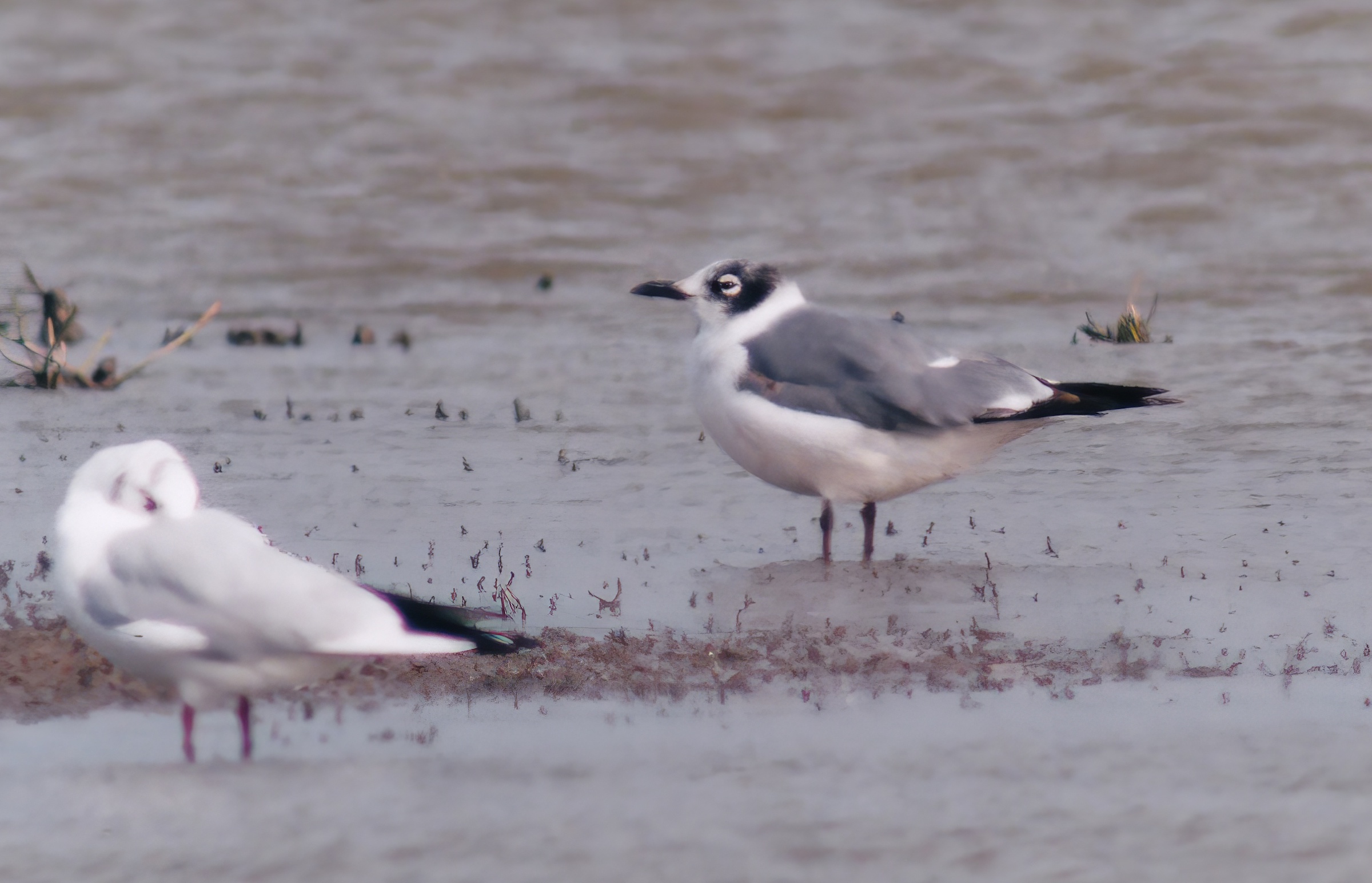Franklin's Gull Leucophaeus pipixcan

| Site | First date | Last date | Count | Notes |
| Kirkby GP | 13/05/1998 | - | 1 | 2CY, presumed same as Norfolk and Shetland bird. |
Finder’s report: Franklin’s Gull at Kirkby on Bain, May 13th, 1998.
by Kevin Durose.
Note: this account appeared in the Lincolnshire Bird Report for 1998. The BBRC report for that year noted that the tracking of this first-summer bird from Norfolk to Lincolnshire and finally to Shetland over five days was remarkable. It was evidently in a hurry to move north and perhaps even back to its native land.
Circumstances
On May 13th, 1998, I decided to visit Kirkby-on-Bain gravel pits, partly to look for passage waders and terns but also in the back of my mind to look for the Franklin’s Gull that had disappeared from Titchwell a couple of days earlier.
I arrived at the southern pits at about 6pm and began checking the gull flock roosting on a sandbar. Within a few seconds I had it, 1st summer Franklin’s Gull, slightly smaller than Black-headed Gulls, shorter legs, darker mantle, white scapular, and secondary crescents. Unfortunately, the bird was asleep and after 15 minutes I still had not seen the head and bill. I was sure of the identification, so I decided to nip to a nearby telephone to alert other observers, and on return the bird had woken up. The bird remained in the area until dusk and was seen by about 35 local birders.
This was the first record for Lincolnshire, hopefully the next may stay a little longer. What was almost certainly the same bird turned up in Shetland a couple of days later. In general appearance it was slightly darker and smaller than Black-headed Gull with shorter legs. At rest the grey upperparts emphasised the white scapular and tertial crescents.
Description
Head: white head with partially developed black hood, emphasising broad white eye crescents most obvious at rear of eye. Bill dark, short and fairly stubby, very similar to Mediterranean Gull but with a little less drooping.
Upperparts: mantle and scapulars dark grey similar to Common Gull.
Underparts: white.
Tail: white below, in flight showed greyish tinge to centre of tail but no real tail band discernible.
Wings: outer wings blackish with no sign of any whitish tips. Wing coverts similar to mantle colour but with hint of dark leading edge to the wing. Secondaries appeared to be a similar colour to primaries but with pale trailing edge.
Legs: appeared very dark red, slightly shorter than Black-headed Gull.
(Account as per new Birds of Lincolnshire (2021), included September 2022)

